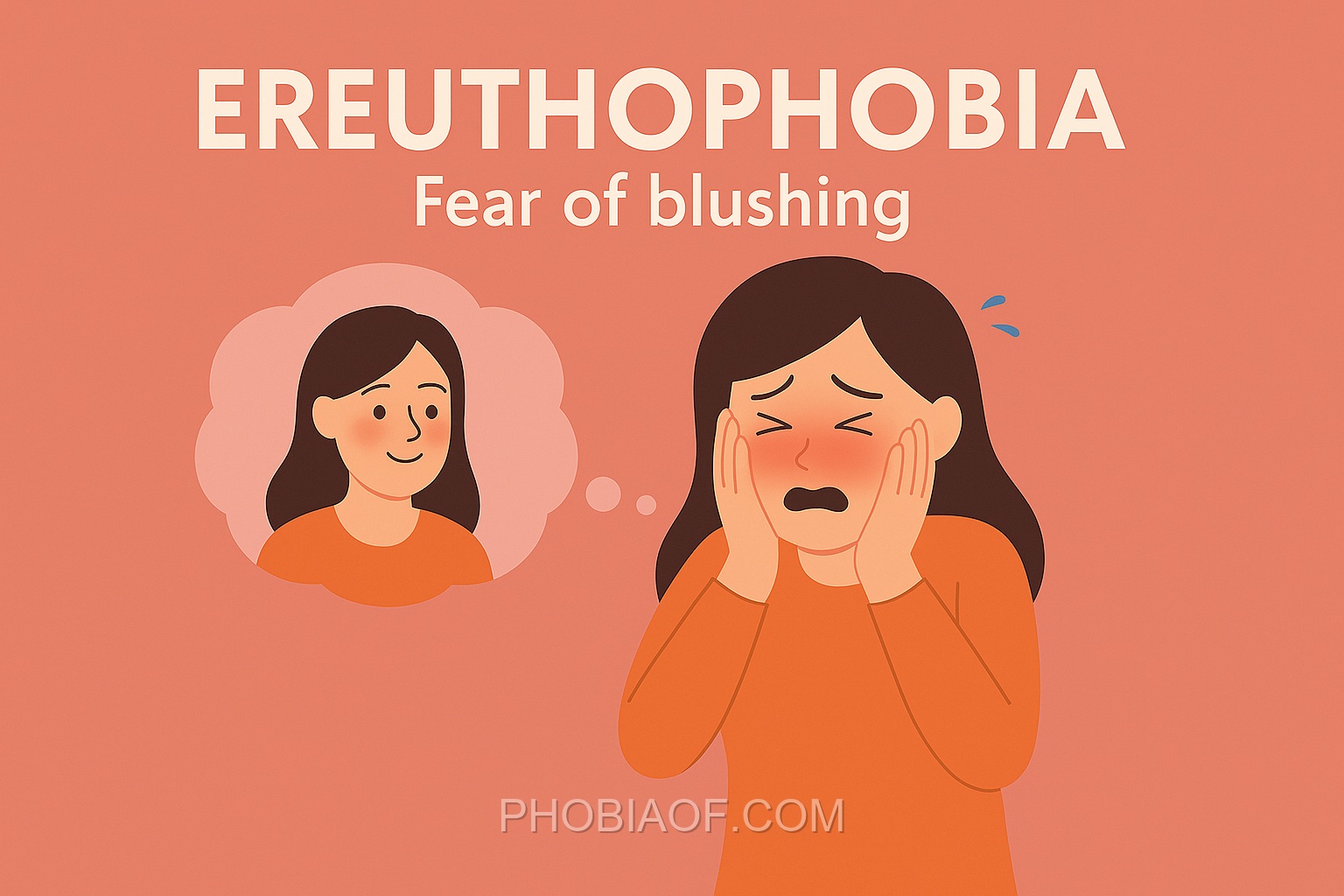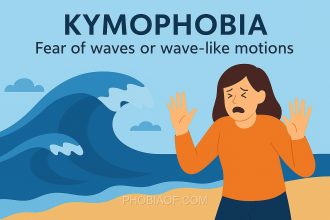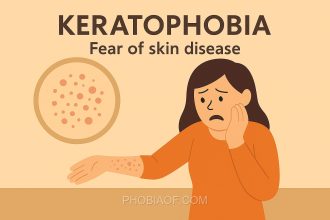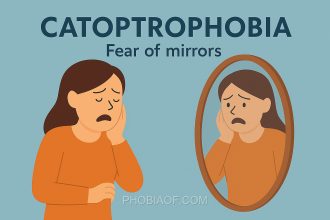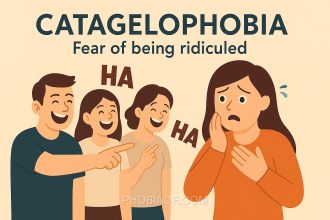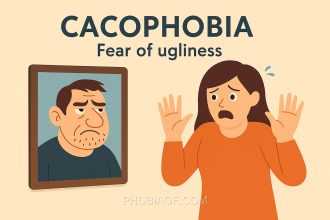Have you ever felt that sudden rush of warmth creeping up your cheeks, leaving you red-faced in a moment you wish you could hide? For most, blushing is a fleeting reaction, but for others, it’s a source of intense anxiety. This is the world of Ereuthophobia, an overwhelming fear of blushing.
Ereuthophobia is derived from the Greek words “ereuthos,” meaning red, and “phobos,” meaning fear. In simple terms, it’s the fear of turning red in the face. While blushing is a natural response to emotions like embarrassment or excitement, those who suffer from Ereuthophobia experience a debilitating fear of this involuntary reaction.
For individuals with Ereuthophobia, the fear of blushing can significantly impact their lives. It may cause:
- Avoidance of social situations to prevent potential embarrassment.
- Heightened self-consciousness, leading to anxiety and stress.
- Difficulty in personal and professional interactions.
Understanding and addressing this fear with compassion is crucial, as it affects not just the individual’s self-esteem but also their quality of life. By exploring therapeutic approaches and building supportive environments, those grappling with Ereuthophobia can find relief from the shadow of their fear.
Causes of Ereuthophobia
Ereuthophobia, the fear of blushing, can have multiple origins. Understanding these causes can help in managing and potentially overcoming this fear. Here are some common reasons why someone might develop ereuthophobia:
- Genetic Predisposition: Genetic factors can play a significant role in the development of phobias, including ereuthophobia. If a family member has a history of anxiety disorders, there might be a higher chance of developing similar fears.
- Traumatic Experiences: A past event where blushing led to embarrassment or ridicule can trigger ereuthophobia. This traumatic experience may cause a person to associate blushing with negative outcomes.
- Learned Behavior: Some individuals might develop this fear by observing others. If parents or peers exhibit anxiety about blushing, it could be modeled and internalized by someone else, leading to ereuthophobia.
- Psychological Factors: Higher levels of social anxiety or a strong fear of being judged can contribute to the development of ereuthophobia. The fear of blushing might amplify existing anxieties about social interactions.
- Environmental Factors: Cultural or societal pressures that emphasize appearance and composure can also play a role. In environments where physical reactions are stigmatized, people might become more self-conscious about blushing.
Research into phobias suggests that a combination of these factors is often at play. Interestingly, some theories propose that blushing itself might have evolutionary roots, serving as a non-verbal communication signal. However, when this natural response becomes a source of fear, it can significantly impact one’s quality of life.
Understanding the causes of ereuthophobia is a crucial step in addressing the fear. By identifying the underlying factors, individuals can seek appropriate support and interventions to manage their anxiety effectively.
Symptoms of Ereuthophobia
Ereuthophobia, the fear of blushing, can provoke intense fear or anxiety in individuals who experience it. This phobia often manifests in both physical and emotional/behavioral symptoms, which can vary in severity from person to person. Recognizing these symptoms in yourself or others is the first step towards understanding and addressing this fear.
Common Physical Symptoms:
- Panic attacks, which may include feelings of terror or impending doom.
- Excessive sweating, especially in situations where blushing might occur.
- Rapid heartbeat or palpitations, often triggered by social interactions.
- Trembling or shaking, particularly in moments of perceived scrutiny.
- Shortness of breath or hyperventilation during anxiety-inducing situations.
Emotional and Behavioral Symptoms:
- Avoidance of situations or triggers where blushing might happen, such as social gatherings.
- Overwhelming dread or worry about the possibility of blushing.
- Low self-esteem or self-consciousness related to blushing episodes.
- Preoccupation with thoughts of embarrassment or fear of judgment by others.
- Desire to remain unnoticed or blend into the background to avoid attention.
When severe, these symptoms can significantly interfere with daily life, making it challenging to engage in social situations or pursue personal and professional goals.
Treatment for Fear of Blushing
Feeling anxious about blushing can be overwhelming, but it’s important to know that Ereuthophobia, the fear of blushing, can be treated and managed over time. With the right approach, you can regain control and reduce the impact this phobia has on your life. Let’s explore some treatment options and coping strategies that have proven effective.
Therapy Options
Several therapy options can help you address and overcome the fear of blushing:
- Exposure Therapy: This involves gradually facing the fear of blushing in a controlled and safe environment. Starting with less intimidating situations and slowly working up to more challenging scenarios can help desensitize and reduce anxiety over time.
- Cognitive-Behavioral Therapy (CBT): CBT aims to change the negative thought patterns associated with blushing. By identifying and challenging these thoughts, you can learn to respond to situations more calmly and rationally.
- Counseling: Speaking with a counselor can provide a supportive space to explore the underlying causes of your fear and develop personalized strategies to manage it.
Self-Help Coping Techniques
In addition to therapy, there are self-help techniques that can complement your treatment:
- Relaxation Exercises: Techniques such as deep breathing, progressive muscle relaxation, and visualization can help calm your body and mind, reducing the physical symptoms of anxiety.
- Meditation: Regular meditation practice can increase mindfulness and reduce overall anxiety, making it easier to manage the fear of blushing.
- Support Groups: Connecting with others who experience similar fears can provide comfort and practical advice. Sharing experiences can reduce feelings of isolation and offer new coping strategies.
Medication
In some severe cases, medication may be considered to help manage anxiety symptoms. Anti-anxiety medications can be effective, but they are usually recommended alongside therapy and coping skills development.
Final Encouragement
If the fear of blushing is interfering with your daily life, it’s important to seek professional help. A mental health professional can guide you through the process of overcoming this phobia. Remember, you are not alone, and with time and effort, you can successfully manage and reduce your fear. Take the first step today towards a brighter, more confident future.
Conclusion
Understanding the causes and symptoms of ereuthophobia, the fear of blushing, can be a powerful step toward overcoming this often distressing phobia. By recognizing the underlying triggers and acknowledging the impact it has on daily life, individuals can begin to take proactive steps toward managing their fears.
It is important to remember that many people have successfully overcome or managed their phobias with time and the right support. The journey to overcoming ereuthophobia may involve seeking professional help, such as therapy or counseling, which can provide personalized strategies to cope with and reduce anxiety.
If you or someone you know is struggling with ereuthophobia, consider reaching out to a healthcare professional or therapist. They can offer guidance and support tailored to your specific needs. Remember, you are not alone in this journey, and with patience and the right resources, it is possible to regain control and live a more fulfilling life.
Embrace this opportunity to learn and grow, knowing that each small step can lead to significant progress. With determination and support, you can conquer your fears and build a future filled with confidence and peace.
